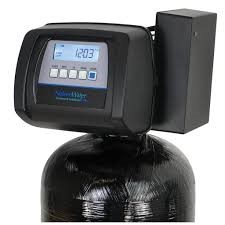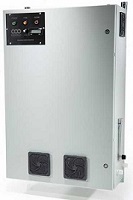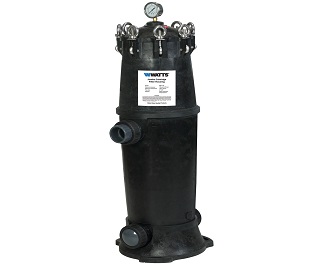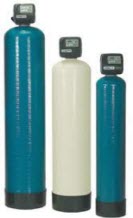

Water filtration is the process of making water pass through a physical barrier to capture or reduce impurities. This is a simple explanation which could be a very complicated process depending on the type of filter used. There are many types of filters that include cartridge, bag, screen, multi-media, ultrafiltration, nanofiltration, and biological filters for example. At Intec America, we offer one of the broadest selections of water filtration systems for whole house and commercial businesses. These water filtration systems are sourced from industry-leading brands and have proven to offer the best benefits to users.
The following are a few popular water filtration systems provided by us.
In some instances, aggressive pretreatment may be required before filtration. For example, well water with iron bacteria or high levels of iron may require a chemical oxidant injection with a holding tank of sufficient contact time to aid in the killing of bacteria and oxidizing metals. Ozone is more effective for high organic and inorganic loads as the contact time and maintenance is greatly reduced. If the pH is low, increasing the pH with a neutralizer may be necessary to effectively remove metals present in the water.
There are several types of filtration systems in the market and these are the more common. Intec has relationships with many OEMs and distributors and not all the technologies are discussed appear on this site. Contact Intec today and they will consult with you on the best filtration technology for your application or offer alternative technologies that may better fit your needs.

Air injection and ozone injection are not new to the industry. However, having the injection take place in the valve head to create and gas pocket for advanced oxidation is. It is highly effective and a more reliable injection process without the cost of additional retention tanks or pumps. Air injection is great for the treatment of elevated iron and manganese as well as moderate hydrogen sulfide. EOG (Enhanced Ozone Generator) is effective on high iron, manganese, and elevated hydrogen sulfide levels.

Over the years, ozonation has emerged as one of the most effective water treatment technologies for rapid oxidation and disinfection. Widely used for bottled drinking water, ozonation is performed by injecting ozone gas, which can be introduced at various points of the treatment depending on what one is trying to accomplish. At Intec-America, we provide ozone water treatment systems from industry-leading brands. Being at the forefront of water treatment technology for several decades, we perfectly understand the requirements and needs of our clients. What is Ozone? Ozone is an inorganic molecule of oxygen that features three atoms of oxygen instead of two. This is why it is depicted by the chemical formula O3. Ozone is formed as a pale blue gas in the environment and it is distinguished by its pungent odor. Ozone is naturally formed in the atmosphere during the lightning and thunderstorm. The air receives its fresh smell after lightening. Ozone is one of the most powerful oxidizing agents found on the earth. It is considered to be 51 times stronger than chlorine, and is also perceived as an alternative to chlorine water treatment in many cases. What is Ozonated Water? Ozonated water is the water that is treated using ozone gas. The ozone gas is introduced through Ozonator and the gas dissolves in water until a reasonable concentration remains. This unstable molecule quickly reverts back to its natural state of O2 and is why ozonated water can be used for drinking. How is Ozonation Performed? Ozonation involves ozone gas, which is produced commercially onsite using an ozone generator. Ozone gas has a short lifespan and cannot be transported or stored for a long time. Typically, ozone gas can be produced from the ambient air. This equipment uses the air (or at times compressed oxygen) present in the...

Minute particles, chemicals and submicron particulates are some of the unwanted impurities found in industrial water systems or drinking water supplies. Since clean and safe water is a primary necessity, it is important to remove such potential contaminants before consumption. At Intec- America, you get a cost-effective solution for water filtering, the whole house cartridge filter. These are simple, modular filters available in the market that ensure the water flowing has great taste and has no foul odors, and sediments. The cartridge, which is encased within a housing or a casing is available in a variety of materials, textures, pore sizes, and physical sizes. Our range of cartridge filters, which utilize mechanical filtration technique, are most commonly used in home water treatment and commercial set ups. So, can install them all important water connection points throughout the house to reduce the instances of water contamination and clogging. This high-end water treatment technology can work at its best when it comes to dispensing clean, decontaminated water. Why Choose our Cartridge Filters? At Intec America, we keep a large inventory of the best-performing whole house water filter cartridges from the industry's leading and most reputable manufacturers. A few of the big names we associate with include Big-Bubba, Watts®, PIONEER™, and ENPRESS, among others. Installing whole house water systems will benefit you in a long run as they are relatively cheap, compact and require minimal maintenance. The other notable features of the cartridge filter systems we offer include; Whole house cartridge filter systems are the simplest and most commonly found filtration units that combine design simplicity and high filtering quality. Available in a variety of micron ratings and sizes, they are easy to clean and quick to change even by non-experts. Cartridge filters are engineered to operate in...

What Are Backwashing Filters? Whole house backwashing filters are the most common point-of-entry (POE) systems sold today. They are popular because they can be customized for various application just be manipulating the media(s) that are contained inside the vessel or tank. Backwash filter systems are tank-style filters that are capable of self-cleaning by reversing the water flow internally (backwashing) to remove captured contaminants. An electronic control valve controls this flow of water and are programable to backwash on certain days, pressure changes, or volume of water that has passed through the system. They can also utilize a downward flow or upward flow set-up depending on the media utilized. Generally, one or more types of granular filtration media(s) such as sand, anthracite, carbon, or other minerals are utilized inside the filter tank. Thus, they are sometimes referred to as a mineral tank. The huge advantage of backwashing filters over traditional cartridge or bag filters is the latter two require manual cleaning or replacement. Manual cleaning can be an inconvenience especially in cold or bad weather conditions. A backwashing filter is more of a hands off approach that requires very little maintenance over the course of several years. Backwashing filters are better designed for applications where pressure drop due to effluent turbidity is expected and cannot be tolerated. Backwashing water treatment systems trigger the reverse flow after specific time laps or pressure changes in order to avoid filter clogging. These filters are suited for the removal of different types of impurities; however, the filtration media differ according to applications. There are different types of filtration medias that are used for backwash water filters applications. Some popular filtration medias used in backwashing water filters are Pyrolox, Birm, Calcite, Manganese Greensand, and Micro Z. Let us go through the types...